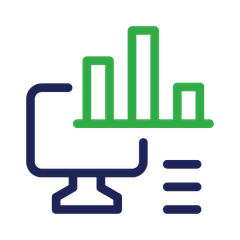Ad Hoc Reporting
Budgeting & Planning Close & Consolidation Financial Reporting Operational Reporting & AnalyticsAd-hoc reporting is a model of business intelligence (BI) in which reports are built and distributed by nontechnical business intelligence users. In other words, with ad-hoc reporting, all the technical user does is set up the BI solution, connect it to the data-sources, establish security parameters and determine which objects end-users can see. From that point on, the actual reports are created by business end-users.
Ad-hoc is Latin for “as the occasion requires.” This means that with this BI model, users can use their reporting and analysis solution to answer their business questions “as the occasion requires,” without having to request queries from IT. Naturally, ad-hoc reports can be and look as simple as a one page data table or as complex and rich as interactive tabular or cross-tab reports with drill-down and visualization features–or present themselves in the form of dashboards, heat maps, or other more advanced forms.
This depends in large part on:
- the type of ad-hoc solution employed
- the needs of the end-user
- the user’s confidence with the solution
Ad-hoc reporting stands in contrast with managed reporting, in which it is the technical user–the report developer–who creates and distributes the report.
The Goal of Ad-hoc Reporting & Analysis
Empower end-users to ask their own questions of company data, without burdening IT with the task of creating a myriad of reports to serve different functions and purpose.
Ad-hoc analysis therefore makes the most sense when a large number of end-users need to see, understand, and act on data more or less independently, while still being on the same page as far as which set of numbers they look at.
For example, a company with a large outside-sales force would be the perfect fit for ad-hoc reporting. Each sales rep can set up his own report for his territory, showing performance against sales goals, orders taken, number of visits to each client, etc., in a format that makes the most sense to him. And just as importantly, the numbers used are pulled from the same data sources as the rest of the company, thereby promoting consistency and minimizing surprises at the end of the quarter.
A good-quality, Web-based ad-hoc reporting solution greatly enhances the benefits of the ad-hoc reporting model for the company adopting it.
What Are The Benefits?
Self-Service
Get critical information to the right people at the right time – Self-service results plus automatic scheduling/delivery of information let you facilitate timely decision making. Users get the information they need when they need it to answer critical, real-time questions.
Flexibility
Flexibility for constantly changing environments – Business needs to evolve. Answers to changing business questions become more critical. It’s impossible to predict what questions and answers users may need in the future.
Reduce IT Workload
The Web-based reporting application itself can be deployed quickly for widespread availability to end-users. Once deployed, it empowers users to build the reports themselves anytime they need the information. No waiting for IT report developers to build them.

Save Training Costs & Time
Streamlines users’ access to critical information. Easy-to-use wizards allow users to get up and running quickly, requiring less time to learn the application and providing clear guidance and saving time to build reports.

Report Sharing
Encourages collaboration and information sharing – Users can easily create, organize, publish and make reports available to other users via the Web for on-demand viewing.
Need an Ad-Hoc Reporting tool?
Learn what to look for in a good ad-hoc reporting solution.